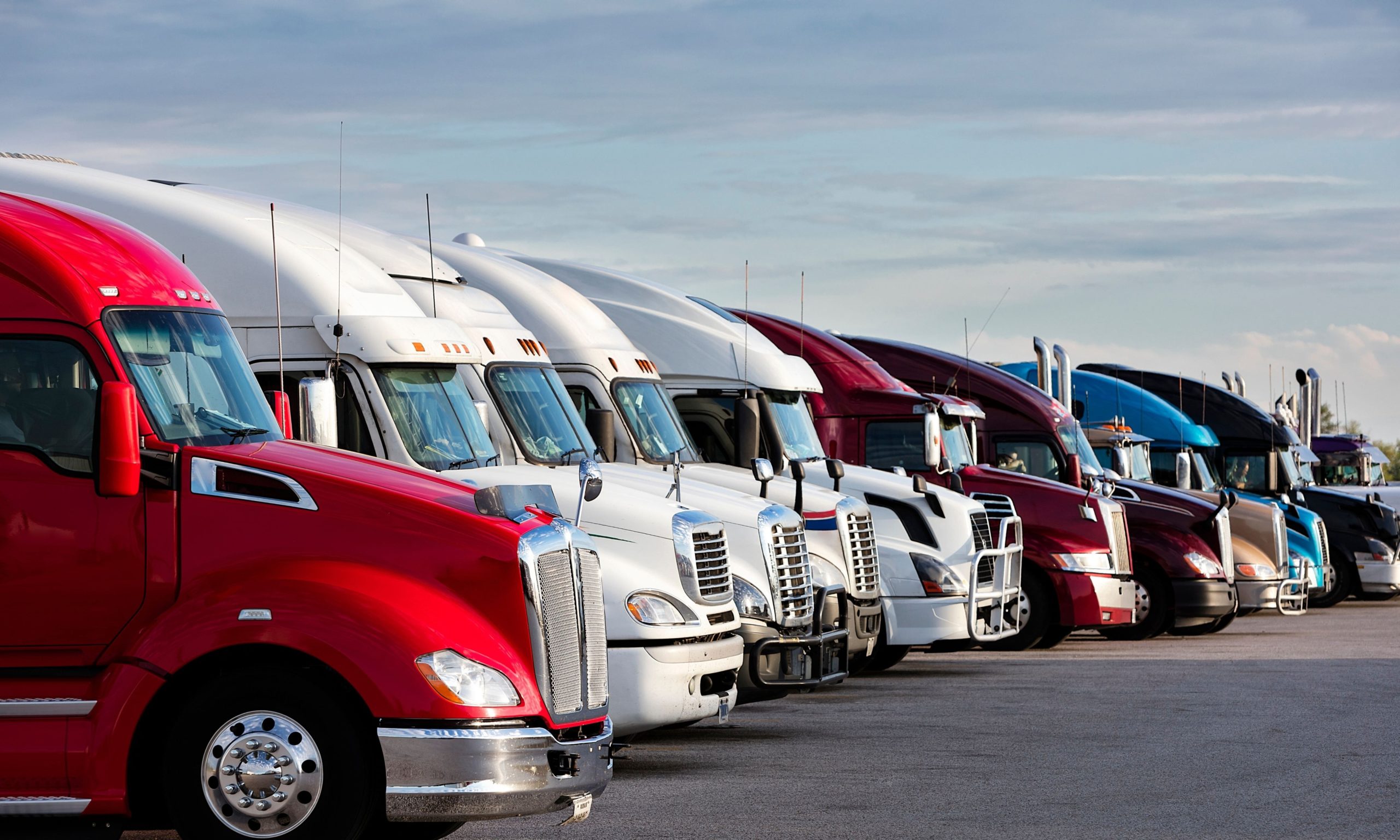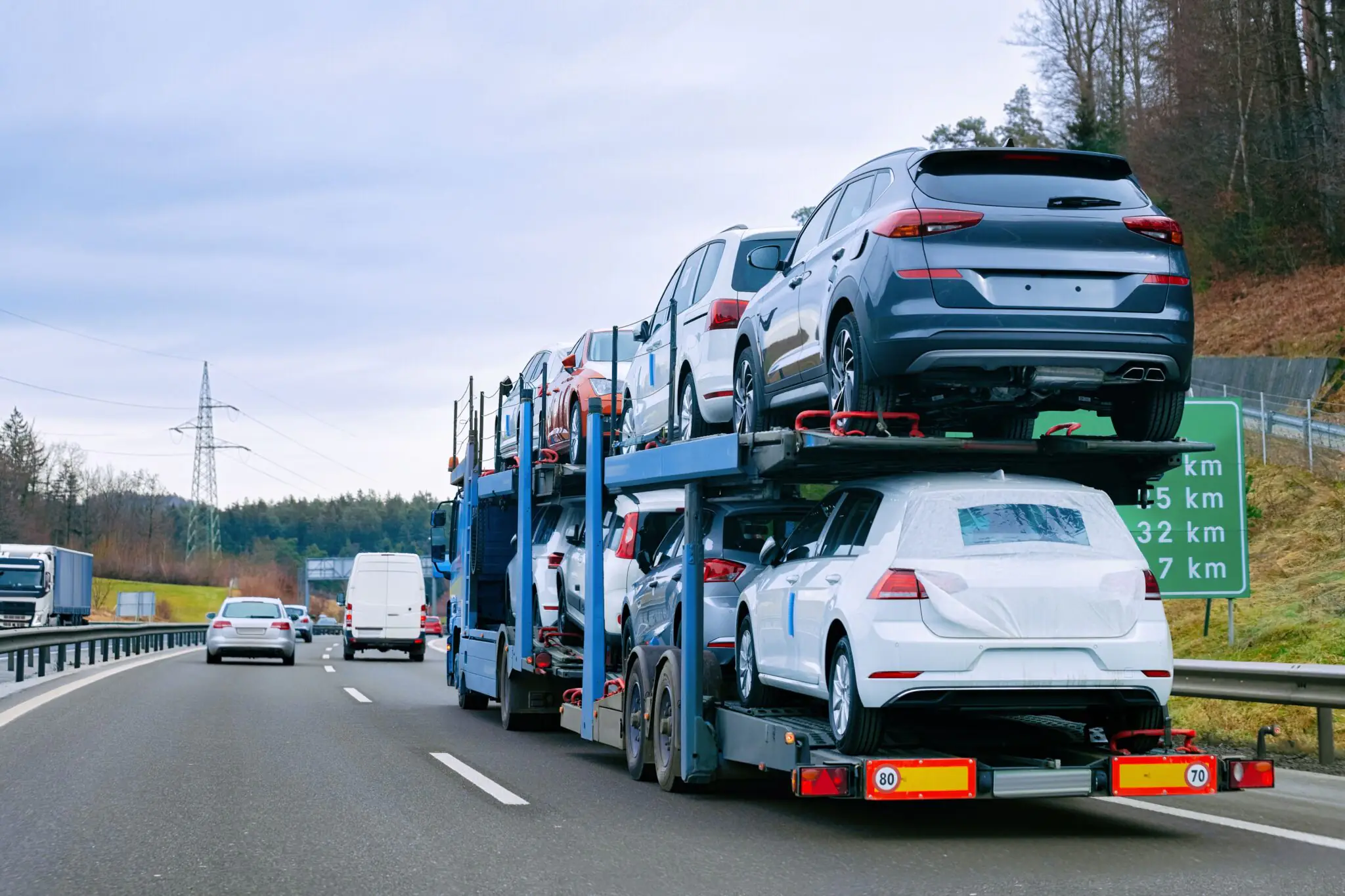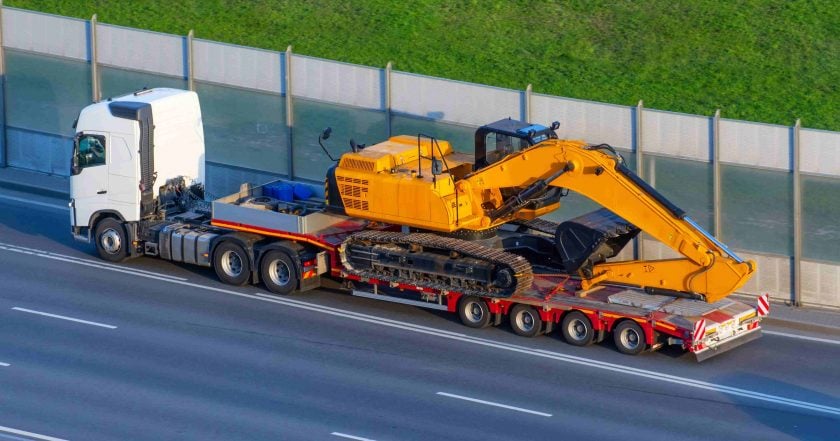Transporting heavy equipment is more complicated than regular cars due to various factors, including the size, weight, and shape of these vehicles. Whether you want to transport heavy equipment to another state or a construction site around the corner, it will be a challenging, time-consuming, and expensive process. Thus, planning is essential in transporting heavy equipment and other main guidelines.
In this article, we will talk about how to transport heavy equipment safely:
Transporting Heavy Equipment vs. Cars
Shipping heavy machinery is more complicated than a regular vehicle in many aspects because of the size and weight of heavy equipment and the long steps that precede their arrival at the final destination. At first, you have to plan the transport carefully by preparing documents to check technical issues. Then comes the need to find the best way to safely load and unload the heavy equipment on the carrier after choosing the appropriate transportation method.
Methods to Transport Heavy Equipment
Unlike usual vehicle transport, heavy equipment does not have a lot of options. Land transporting is the main road for moving heavy machinery, either on transporting trucks (roll-on/roll-off) or cranes.
The same methods can be applied to overseas transport, where the large vehicle can be driven on the vessel, hauled by containers, or on a flat rack if the heavy equipment cannot be operated.
The Preparation Processes
Before even leaving point A, many procedures are required to transport heavy equipment, as many documentations, examinations, and evaluations are needed. Therefore, the key to safe heavy machinery transportation is the good pre-planning:
Conduct a Documented Risk Assessment
Transporting heavy equipment is a huge responsibility. One small detail can lead to massive consequences, so it is vital to assess all the possibilities and perform a risk evaluation by documenting the taken steps and responding to failing situations. It can be conducted by a senior manager or supervisor, who can access all relative data and control the operation.
Provide Involved Sites and People with PPE (Personal Protective Equipment)
No matter how prepared you are, it can never get too safe. Therefore, protection tools for the entire team are necessary throughout the whole operation of the heavy equipment transport. In addition, PPE documentation is a risk-reducing strategy that permits the safety protocols you and your crew to adhere to.
Take Measurements and Dimensions
The cargo cannot be offset without knowing its dimensions. The height, width, length, and weight are essential factors for transporting heavy equipment, as the DOT regulation revolves around them. Moreover, these factors play a role in deciding on the transport method and carrier. Verify and document your machinery’s measurement to avoid fines, delays, or accidents.
Check the Trailer Capacities
Ensure the truck or vessel has what it takes to carry and hold the equipment taking into consideration their size and power. Inspecting the readiness of the trailer is also a part of the transporting operation, so examine their primary and backup tires, lights, brakes, tie-down points, and hydraulic lines.
The Loading Processes
It is not just about placing the cargo on the ramp but finding the appropriate way to do so and keeping it secure in that placement. Therefore, there are some main points to follow to ensure reliable heavy equipment transport:
Assign Duties
Chaos is not an option when loading a large vehicle, as everything should be in place so do people. The tasks should be divided among staff members, who need to be informed about their job and standing place, avoiding misunderstandings or confusion.
Inspect the Ramp and Line It with the Machine
Keeping the ramp and trailer’s decks clean is vital in transporting heavy equipment. Any oil, dust, ice, water, or debris can compromise the hauling operation. The ramps should also be leveled with the machinery to ensure a smooth movement.
Secure the Tie Points
After driving the heavy equipment or placing it on the trailer with a crane, all chains are securely tied down on the appropriate tie-down points and hooks. The driver’s visibility and movement should also be verified, where the heavy-duty vehicle should not form an obstacle for him to exit the vehicle or reach out tools.
Read more about Tips for Your Heavy-Duty Vehicle Transport.
The Transporting Processes
Transporting heavy equipment poses a threat to highways and other cars. Hence, driving the machinery is not only about starting the engine; different strategies to ensure a safe haul are:
Mapping the Road
The course of the transport should be well thought out, where the width of roads and the height of tunnels and bridges should be analyzed. In addition, every turn, stop, and side road should be expected. Although you might not have to do that yourself and the auto transport company will be responsible for these steps, it’s good to be aware of everything and confirm all is well planned.
Schedule Regular Inceptions
Stops stations are designed for two reasons: for the driver to rest for a while and inspect the cargo and truck. Industry safety standards recommend the following as inspection benchmarks while heavy equipment is en route:
- Once during the first 50 miles of transport.
- Once every 150 miles or once every 3 hours— whichever comes first for long-distance hauls.
- Have the new driver run a full inspection at every driver change, then document that assessment in a transport log.
The Unloading Processes
Finally, the cargo has safely reached the construction site, and it is time to deliver it on the ground. Similarly to how the machinery was loaded on the trailer, it will be unloaded:
- Prepare the staff, site, and ramps: clear the area out and ensure that every worker is in place and ready.
- Free the tie chains: slowly untie all the hooks and links, and set them away.
- Put the equipment down: slide the equipment down on the ramps or use a crane to grab and move it with caution.
- Final inspections: do one more examination to ensure the heavy equipment was transported safe and sound.
Conclusion
Transporting heavy equipment is a serious manner that needs a careful selection of methods, roads, and tools. Although many hazards are related to heavy-duty vehicle transport, they could be avoided by following the guidelines.
Selecting a reliable auto-transport partner is essential to ensure transportation success. Tempus Logix has years of experience moving heavy-duty vehicles and all other types of cars, and the company handles all the necessary steps on behalf of the client.
Learn more about on Heavy Equipment Transport with Auto Shipping Brokers.










